 Your new post is loading...
 Your new post is loading...
...Chief among the findings was that many young consumers craved more in-depth news but were unable or unwilling to get it. “The abundance of news and ubiquity of choice do not necessarily translate into a better news environment for consumers,” concluded the researchers in their final report. “Participants in this study showed signs of news fatigue; that is, they appeared debilitated by information overload and unsatisfying news experiences .
. . . Ultimately news fatigue brought many of the participants to a learned helplessness response. The more overwhelmed or unsatisfied they were, the less effort they were willing to put in.
”The idea that news consumers, even young ones, are overloaded should hardly come as a surprise. The information age is defined by output: we produce far more information than we can possibly manage, let alone absorb..
The New York Times is a 150 years old. So you don't expect it to be a content marketing pioneer. Here are lessons from a leaked report that may surprise you.
...The revelations from the recently leaked report into their challenges of facing upstarts and competitors is a compelling insight into publishing and also content marketing.
Content is the weapon of choice to gain attention traffic and advertising revenue in a digital world.
Content marketing lessons
One observation from the report that surprised me away was that they didn’t use social media for marketing but for measuring!
Here are some insights into how companies need to adapt in a digital age with publishing and content marketing. I have also included actual excerpts from the report....
A 96-page internal New York Times report, sent to top executives last month by a committee led by the publisher’s son and obtained by BuzzFeed, paints a dark picture of a newsroom struggling more dramatically than is immediately visible to adjust to the digital world, a newsroom that is hampered primarily by its own storied culture.
The Times report was finalized March 24 by a committee of digitally oriented staffers led by reporter A.G. Sulzberger. His father, Times Publisher Arthur Sulzberger, fired Executive Editor Jill Abramson Tuesday, a decision that doesn’t appear immediately related to the paper’s digital weaknesses.
The report largely ignores legacy competitors and focuses on the new wave of digital companies, including First Look Media, Vox, Huffington Post, Business Insider, and BuzzFeed....
Last month, venture capitalist Marc Andreessen posted what, in his view, was the future of the news business. Reactions were varied, but everyone had one. I joked that my entire Twitter stream was people replying to Andreessen as he has very publicly thrown himself into the future of news conversation.
We need new voices in this discussion like Andreessen, but his post was too… nice. I’d bet he left his more candid insights out. After the post, I found myself wishing someone would share more actionable observations from the industry.
So, here’s my take. Each one of these could be their own essay. Please argue with me....
TAKEAWAY: Guess what? Those millennials don’t read news much more differently than their parents and grandparents—-except they almost exclusively read it on a mobile device.
Why are newspaper opinion columnists so consistently baffled by the politics, technologies, and social mores of the 21st century? We've crunched some data, and we think we've figured out the answer: They're old as hell.
When considering the future of print, remember that 80% of Canadians read newspaper content every week. The number of those who only access this content through digital formats is rising, of course. But one thing remains consistent: the belief that newspapers are a credible and comprehensive source of information.
Newspaper reading habits have changed in the past few years. No one would argue that point.
But it is often human nature to exaggerate the pace and degree of change. That, of course, is good if you need the push to re-invent yourself but less helpful if you are the one who has to manage the transition...
Across the country, newspapers are leaving their old haunts and shifting to cheaper buildings — and taking the opportunity to reshape how their newsrooms look.
... An upcoming white paper I’m writing for Tow will look further into how these space changes facilitate breaking news, but for now, suffice it to say that this kind of organization creates a centralized production and distribution platform for newsrooms hungry to stay on top of the latest.Other newsrooms are taking the opportunity to brand moves as organizational change as well, looking beyond nostalgia.
In an article announcing its move, the Syracuse Post-Standard’s headline read “Syracuse Media Group’s move signals shift to digital-first focus for news and ads.” As the lede put it: “Goodbye, cubicles and copy editors. Hello, collaborative work space and curators.”...
This is what UPI's 100 years of journalistic excellence has pathetically come down to.... - 4 of its top stories are about misbehaving celebrities. The other is about whether a naked photo that went viral was staged. - 4 of its top stories are about naked people; 2 of its top stories contradict each other. And considering that the 5th story could have been fact-checked by just watching the video in question, that means UPI ran a story for hits without even watching the video. - 3 of the stories are not even about Miley Cyrus, they’re about celebrity reactions to her routine....
That’s what the surveillance state is trying to do. It has the means, the will and the latitude to go after journalism the way the way it went after terrorism. Only a more activist press stands a chance of resisting this.Last week, the novelist and former CIA operative Barry Eisler published one of the most important posts I have read about what’s happening to the press since the Snowden revelations began in early June.
In it, he tries to explain why authorities in the UK detained Brazilian national David Miranda for nine hours at Heathrow airport and confiscated all the technology he had on him. (Miranda, as everyone following the story knows, is the spouse of The Guardian columnist Glenn Greenwald. He had been acting as a courier, bringing documents on encrypted thumb drives back and forth between Greenwald in Brazil and his collaborator, Laura Poitras, in Germany.)Eisler’s explanation of this pivotal event is the most persuasive I have seen....
...Today, the delivery of news is not so defined. Website, social media and digital platforms have profoundly changed not only how we get our news, but also what news we are getting. The comment section of online news stories are often more popular, or at least more entertaining, than the actual news story. The ability to “like” and “share” news now allows others to instantaneously watch or read what we are following.
As the number of online and social media offerings grows, we are sadly seeing the demise of newspapers. In 2011, 152 American newspapers ceased operations. Rapidly declining advertising revenues continue to be the industry’s core problem as the majority of us seek our news online.
Now, plans are in place for significant changes for CNN.com and CNN digital platforms. The channel will launch a redesigned website (see screenshots here) and install a back-end system that its editorial producers can utilize. This comes after the recent merging of their digital and television newsrooms into one entity. With a new emphasis on their talent, CNN anchors, reporters and writers will become more prominent, enabling the sharing of content across platforms....
In the wake of the Boston Marathon bombing one commenter called it a “watershed moment for social media” – but not in a good way. “Legions of Web sleuths cast suspicion on at least four innocent people, spread innumerable bad tips and heightened the sense of panic and paranoia,” wrote Ken Bensinger and Andrea Chang in the L.A. Times. In a similar post, Alan Mutter quipped that crowd reporting after the Boston Marathon went from critical mass to critical mess.
Recent events like Hurricane Sandy and the Boston marathon bombing have cast a harsh spotlight on the brave new world of breaking news and highlighted the critical need for better tools and techniques for verifying and making sense of the flood of information these events produce. This has all played into the ongoing debate about whether the Internet and new technology erode our standards and our trust in newsgathering....
The question that still remains is why: Why would a technology entrepreneur invest in a stodgy media outlet in a declining industry? Was the motive for the move sentimental altruism or profit?
I think Henry Blodget at Business Insider hit the nail on the head in his piece when he said that:"Content and commerce companies have long dabbled with combining the two experiences, but no one has really nailed it. Given Amazon’s expertise in affiliate marketing and advertising, it’s not hard to imagine that the Washington Post could quickly become a laboratory for the next generation of integrated content and commerce."...
|
Stop the presses! For six days a week! Yes, I m being serious. ... I’m going to share a “strategic foresight” (also called “future studies”) exercise with you: a “Futures Wheel” that I created which examines how a particular change might play out. In this case, the hypothetical change is for the New York Times to at some point in the near future stop printing and delivering daily printed newspapers (but retain its Sunday print edition) and focus most of its resources on digital products and services.
Here’s the futures wheel for the no-more-daily-print-edition New York Times. Start at the middle (black box, the proposed change) and go out in spokes to see the various first- and second-level consequences that this change likely will have. Green indicates positive elements likely to gain revenue; red indicates where revenue and/or jobs are likely to be lost. Let’s discuss it after you’ve had a chance to look over it. (Also know that a “futures wheel” is one of many tools in the foresight professional/futurist’s bag. It’s useful in this case to think through the consequences of a significant organizational change.)...
We don’t typically write about intra-newsroom politics at Nieman Lab, leaving that to Manhattan’s very capable cadre of media reporters. But Abramson’s removal and Dean Baquet’s ascent has apparently inspired someone inside the Times to leak one of the most remarkable documents I’ve seen in my years running the Lab, to Myles Tanzer at BuzzFeed.
It’s the full report of the newsroom innovation team that was given six full months to ask big questions about the Times’ digital strategy. (A summary version of it was leaked last week, but this is the big kahuna.)
The Pew Research Center’s Journalism Project has released its 11th State of the News Media report. A comprehensive “document,” it covers TV, newspapers, magazines, radio and digital.
I won’t try to summarize the full sweep of this “best of times, worst of times” report. However, below I’ve excerpted a few key findings and charts that provide a snapshot into where things stand in US journalism and news consumption....
...I should end the year on an upbeat note, shouldn’t I? But Time Inc. ruined it. The surrender of journalism to advertizing and public relations – not alliance with, but surrender to – was the biggest media story of 2013 that the media almost didn’t cover at all. But it’s right there in black and white, if buried on the slowest news day of the year:
Time Inc. will abandon the traditional separation between its newsroom and business sides, a move that has caused angst among its journalists. Now, the newsroom staffs at Time Inc.’s magazines will report to the business executives. Such a structure, once verboten at journalistic institutions, is seen as necessary to create revenue opportunities and stem the tide of declining subscription and advertising sales...
The State of the Digital News Publishing Industry, According to the InternetThere must be something in the air, maybe the end of a crazy year, that’s making writers introspective. In the past week alone, there have been some very good analyses of the state of the digital publishing . Since it’s cold outside (unless you live in a place where it’s not cold outside, and in that case, stop gloating) and you need some good reads for hibernation, here are five pieces that, I think, aptly explain the industry right now and help further the conversation....
...The news, broken by Bloomberg’s Edmund Lee, that once mighty Forbes is going on the block after 96 years of mostly family ownership, has evoked mostly shrugs—another day, another fire sale of a journalism icon—with much of the discussion surrounding how well Bono and other minority investors have done from their investment. That, and what to do with the carcass.
The asking price of $400 million would represent at best a salvage operation for both the Forbes family and Elevation Partners, which includes Bono and former Apple executive Fred Anderson, and which paid, according to Fortune’s Dan Primack, $265 million (higher than previous reports) for its 45 percent stake back in 2006, valuing the company at $588 million. Elevation has already written down its investment by 75 percent.
If Forbes doesn’t get its asking price, it won’t be for lack of effort. Since 2010, the Forbes story has been a strenuous effort to reinvent itself as a digital media innovator, creating easily the most frenetic site in business news. It has assembled an army of 1,200 (that’s one thousand, two hundred) mostly bloggers producing dozens of posts a day (a mere 45 between 5pm Saturday and 5pm Sunday; e.g. “Practical jet packs finally take off”); embracing native advertising, the ethically problematic mixing of ads and editorial, to an extent few mainstream outlets have; amping up its conferencing business (itself not without problems), among other things....
I’ve been worried about this. Information should be free – not in the sense that it should cost me nothing, but in the sense that it should cost me nothing, but in the sense that I should be able to access a variety of news sources, so that my view of the world is not coming from one source alone. If I have to pay per news source, I have an incentive to limit my news consumption, to let just one small group of people filter my world for me.
The great strength of online news is the possibility of aggregating across sources. I am willing to pay for that. I pay for NewsBlur, although it is far from my ideal RSS service. I would gladly have paid for Google Reader...
Eric Schmidt has seen the future of magazines, and it's on the tablet....
...Five years from now, the world will have "powerful, tablet-looking things — [devices] that look roughly like a tablet — as a substitute for traditional media," Schmidt predicted. Those tablets will have apps that are "incredibly immersive," including magazine apps, which will take advantage of people's social graphs, location data and other features to offer a more interactive experience, he said....
The New York Times is in the Snowden game.The paper — which NSA leaker Edward Snowden deliberately avoided over his fear that it would cooperate with the United States government — is now working with the Guardian on a series of stories based on documents that detail National Security Agency cooperation with its British counterpart, the Government Communications Headquarters, known as GCHQ.
"In a climate of intense pressure from the UK government, The Guardian decided to bring in a US partner to work on the GCHQ documents provided by Edward Snowden," Guardian spokeswoman Jennifer Lindenauer said in an email. "We are continuing to work in partnership with the NYT and others to report these stories."...
Chad Skelton does a good job of explaining it. There are just as many journalists working in Canada today as there were a decade ago, according to data from Statistics Canada....
Dear Jeff [Bezos],While it might seem an awful cliche, the fact of the matter is — if you go back to a time long before the commercial Internet existed, and well before you became so rich that you have $250 million in spare change to purchase a major metropolitan newspaper — I started my real journalism career in the mailroom at the Washington Post.
On the storied fifth floor of the Post’s longtime building at 15th and L Streets, NW — which is now also prepping to be sold for about half of what you forked over for the Post itself (oh, the irony!) — I delivered piles of letters and packages to reporters and editors, starting when I was still a student at Georgetown University.
I had come there as both a mailroom lackey and also as a stringer, after I called and chewed out then-Metro editor Larry Kramer (now the editor publisher of USA Today) about how badly the newspaper was covering the area’s colleges, including mine. He told me to come down to the Post and say it to his face, which I did with all the obnoxiousness a 19-year-old could muster.
As it turned out, I ended up staying at the Post — with a few short departures for things like graduate school — for almost 15 years, in more jobs than I can remember, including the lowest rung in the then-backwater business section. .PS Don't forget to breathe.
|



 Your new post is loading...
Your new post is loading...











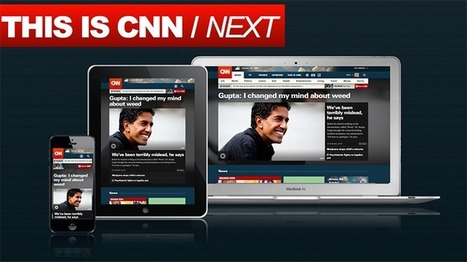


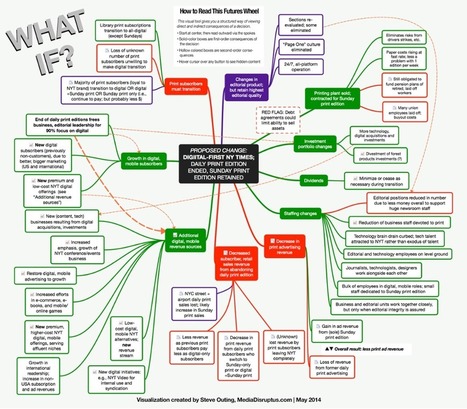

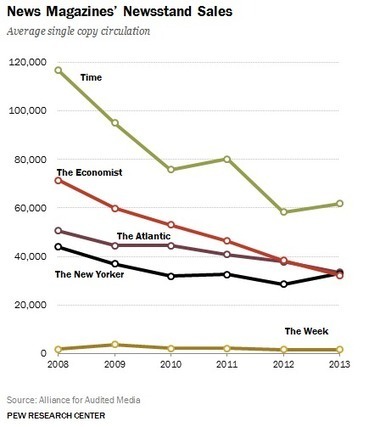




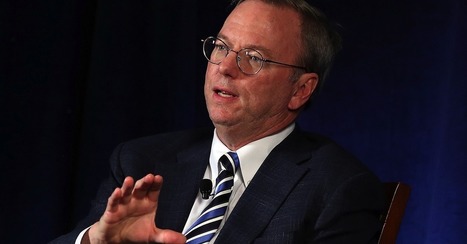



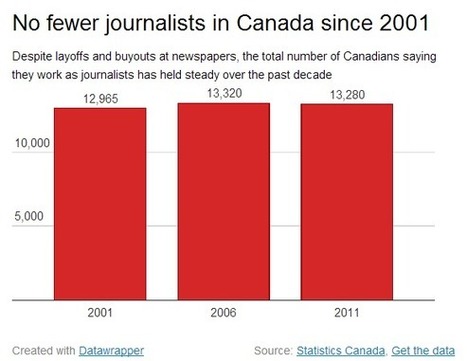






Media's challenge to find new readers among the young.